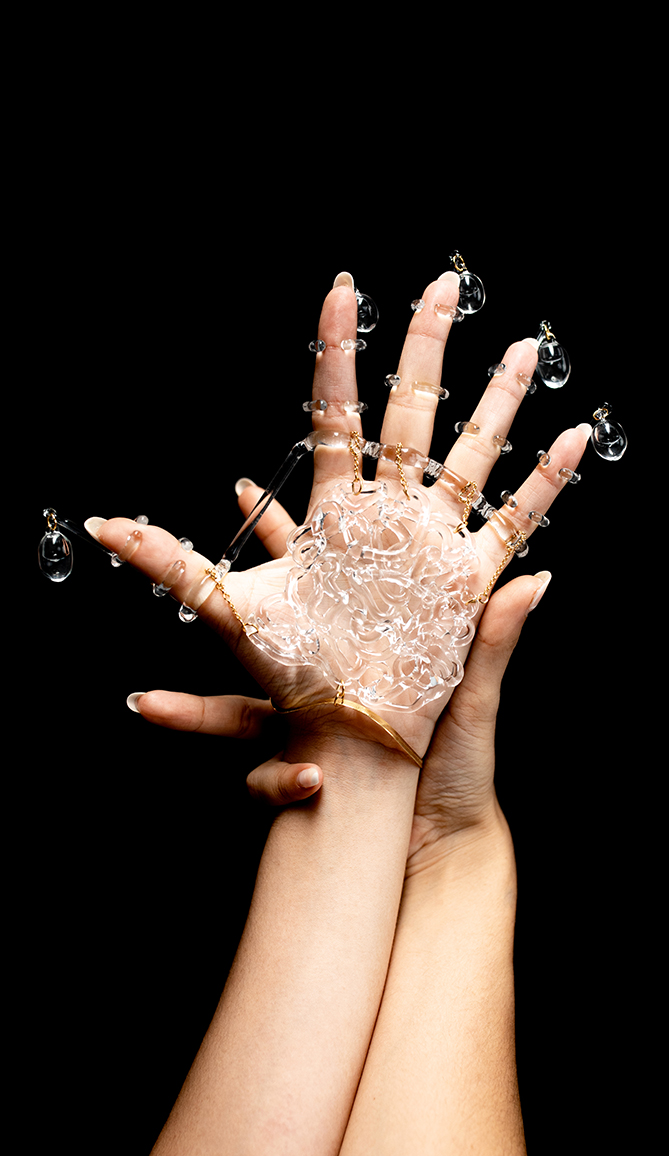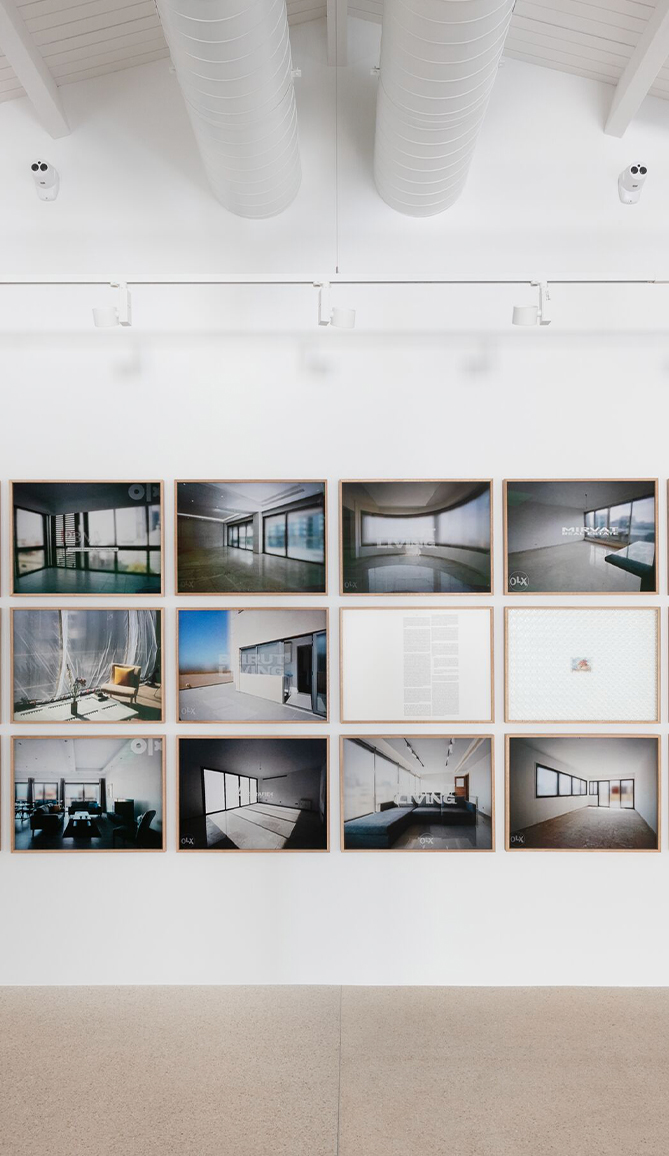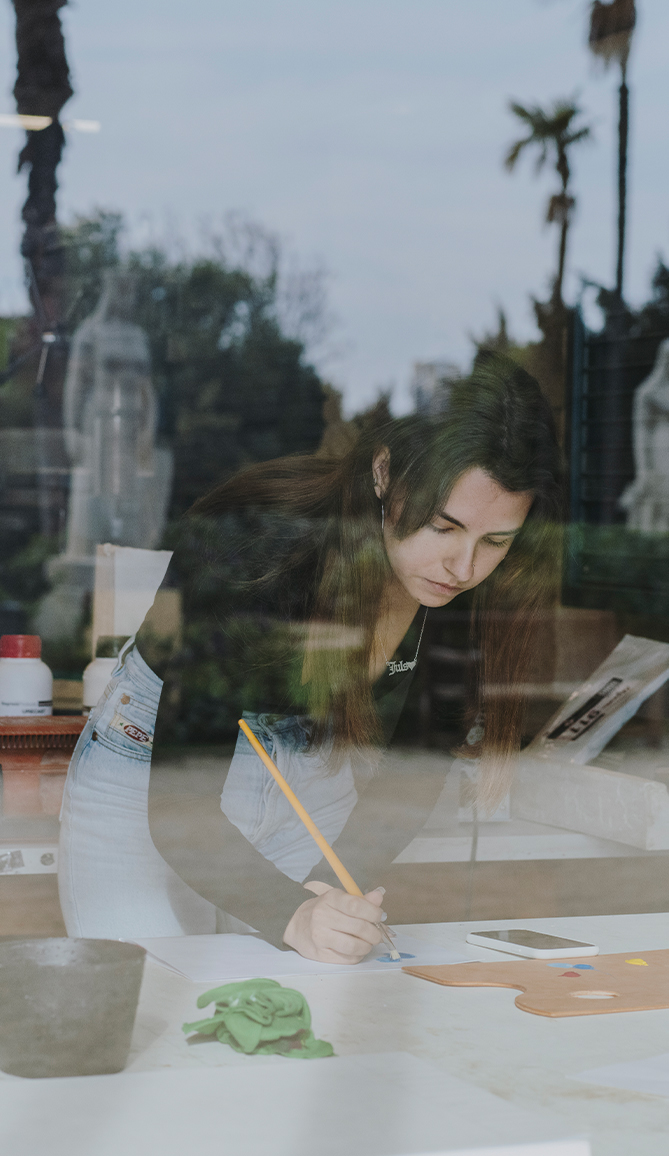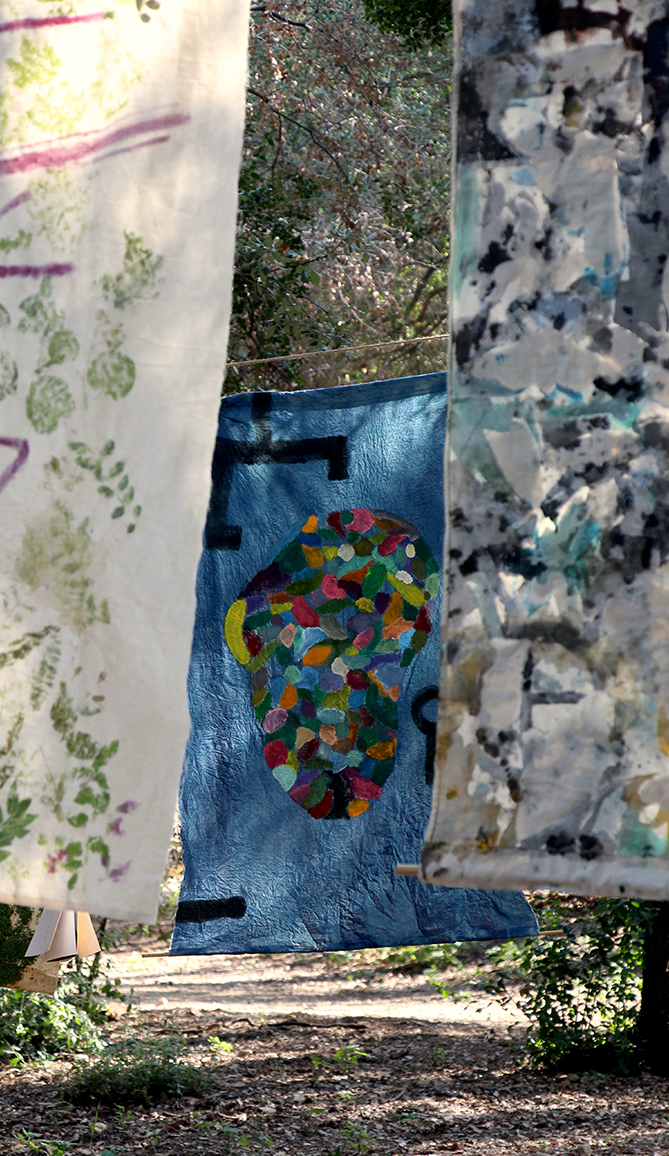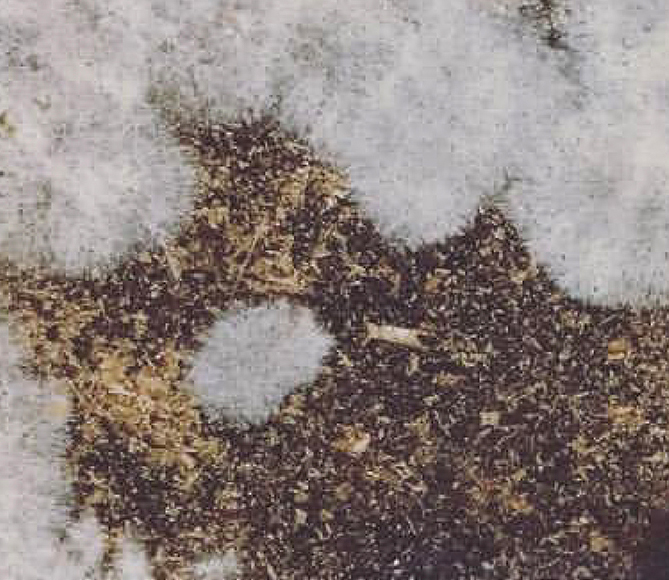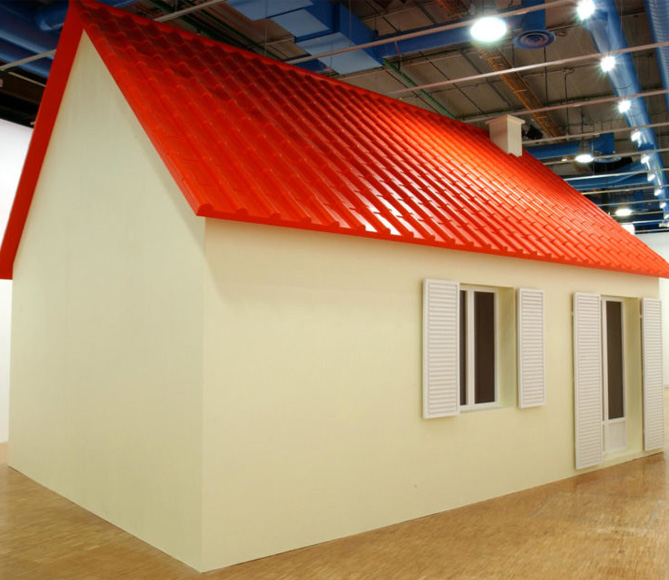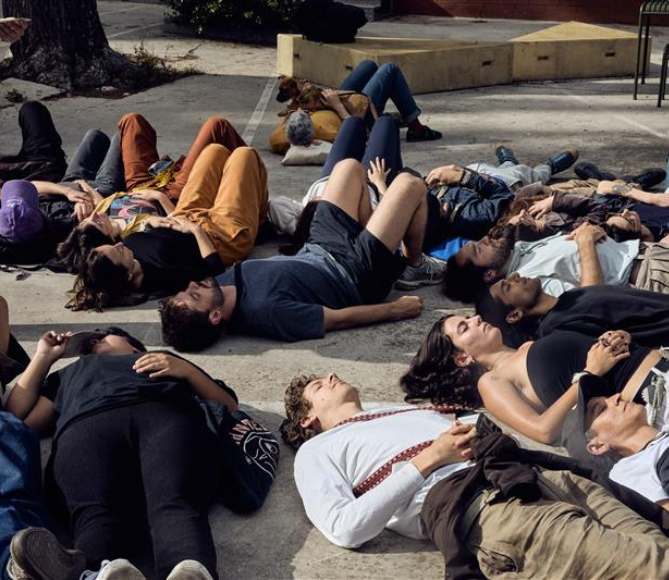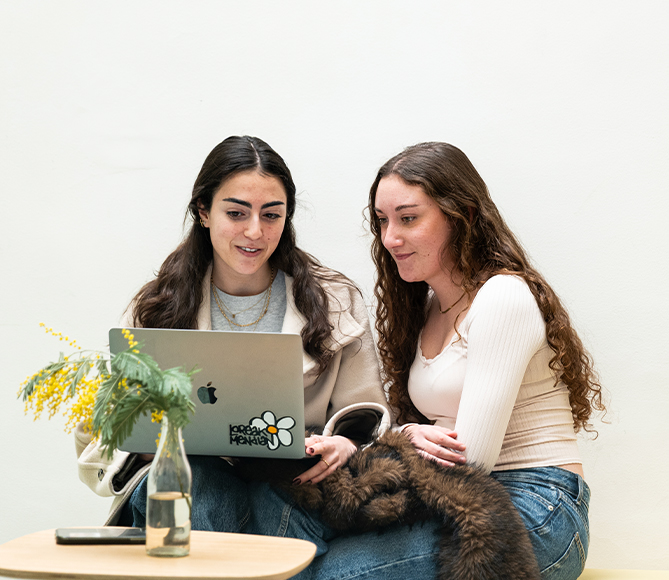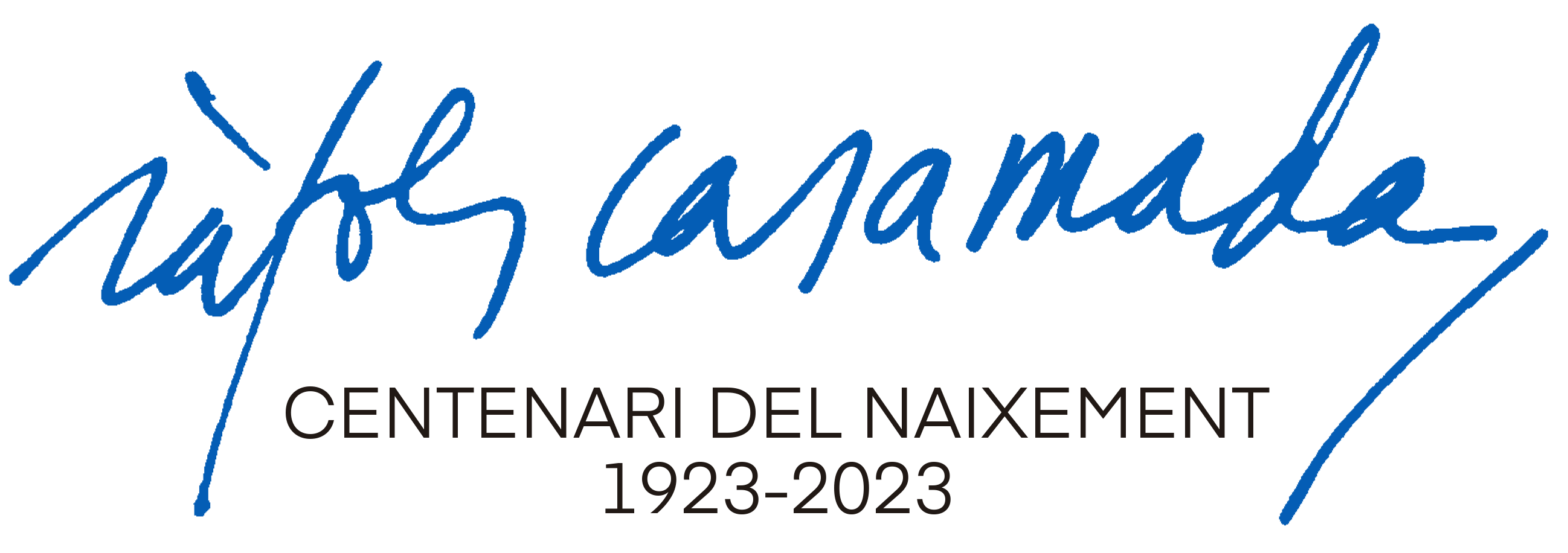
Albert Ràfols Casamada formed part of the founding team of EINA in 1966, following the mass resignation in September of the same year of the majority of the professors from Elisava, including Ràfols himself who had also been the director there since 1963. In 1967, he was appointed as the first director of EINA, a position he held until September 1985 when Miquel Espinet succeeded him. From then on, he served as the dean of the school. He was also the president of the EINA Association between 1985 and 1990 and the EINA Foundation until 2009.
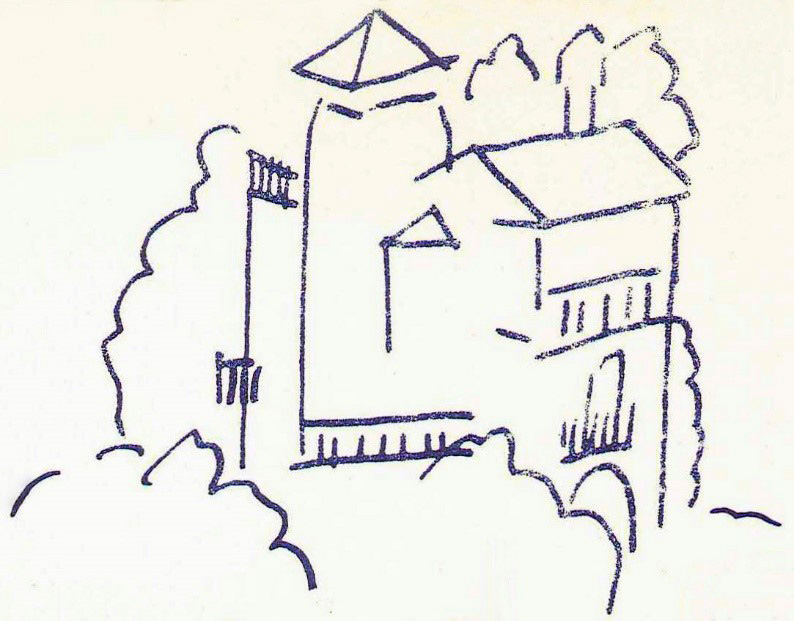
Sketch by Albert Ràfols Casamada of the Casa Dolcet, the first headquarters of EINA.
Teaching at EINA
Albert Ràfols Casamada's career as a professor at EINA began with him teaching the subject dedicated to the study of Colour, which was presented in the curricula under different names: Colour and Visual Communication, Colour and Composition, Colour Workshop, or, simply, Colour. The course was structured over three large blocks: the first, dedicated to formal studies and the fundamental principles of vision; the second, to graphic expression; and the third, to the "signs of communication" which presented an introduction to semiotics.
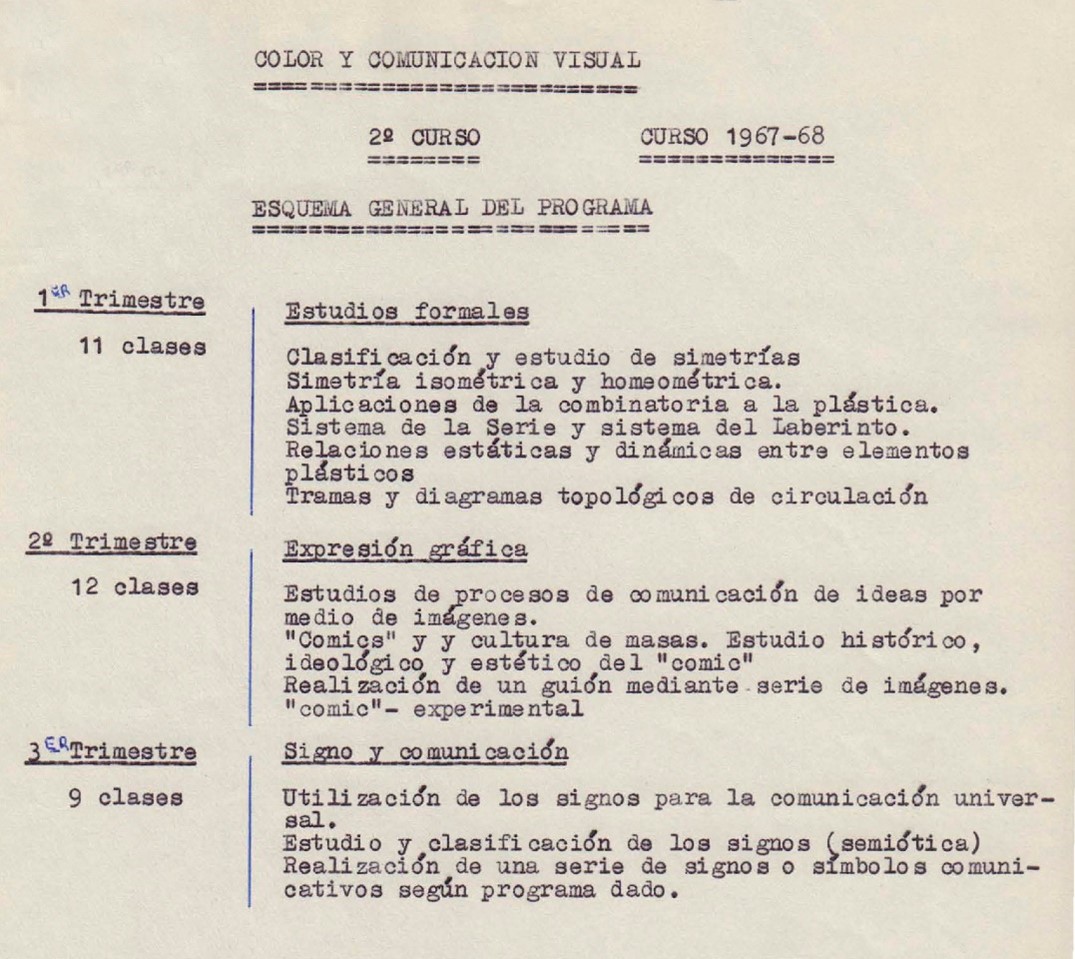
Syllabus of the Colour and Visual Communication subject taught by Albert Ràfols Casamada.
The visit by Gruppo 63 to EINA in February 1967, as well as the subsequent conference in 1968 led by Umberto Eco, who returned to EINA to hold a seminar on comics from the perspective of mass media, increased Albert Ràfols's interest in the study of semiology.
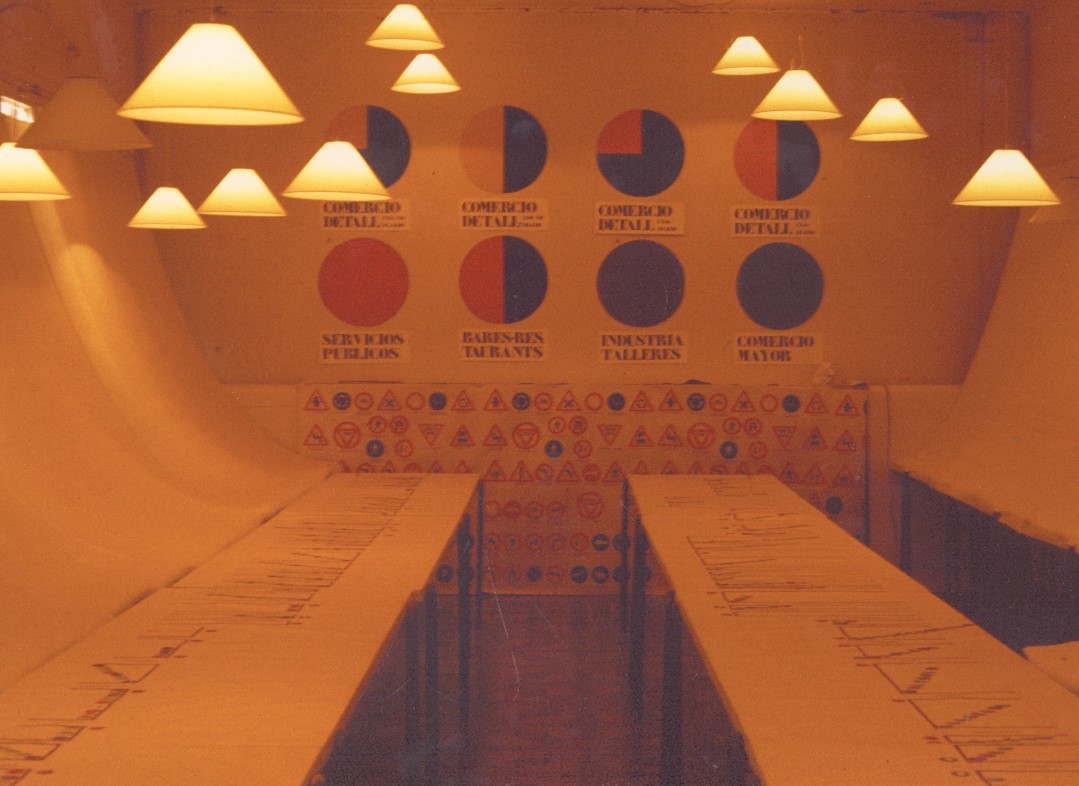
This interest was evident in his classrooms as Ràfols led experiences such as the semiological study of the Barcelona street Travessera de Gràcia, an activity in which, according to Alexandre Cirici within an article published in Serra d'or journal, “a complete semiological study [of this street] through the study of fields and observations from students in the course, [which] exemplifies the interest in giving pragmatic use to linguistic theories from the point of view of design and interventions on the environment” (1977). The public presentation of this project by the students was made through a giant walkable map of the entire street indicating the types of stores, services, and uses along with describing the colours, smells, and sounds. Photographs of the building facades were also projected and sounds recorded live at different points of the street were amplified.
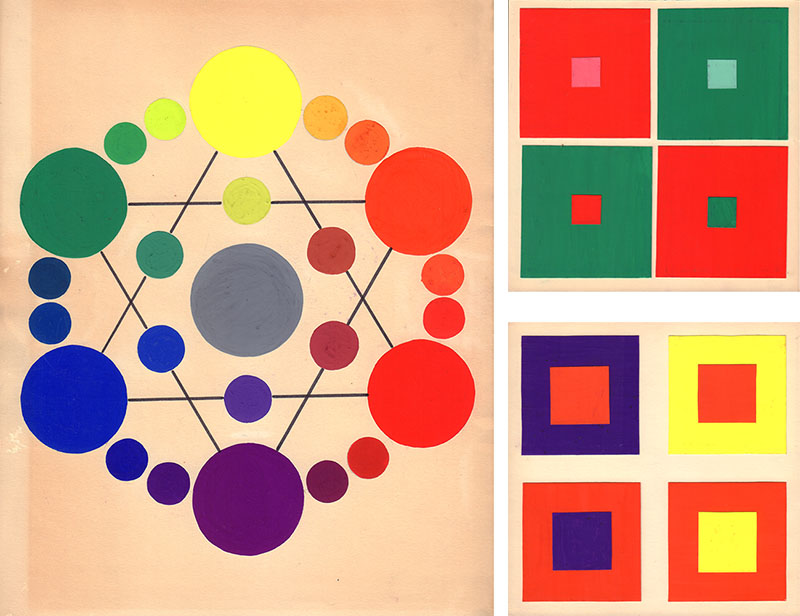
Exercises in the Colour subject.
As part of the Colour subject in academic year 68-69, students were given the chance to participate in an action called Experimental environment. The action consisted of collectively making an installation based on the studies and practices previously carried out in the classroom on colour theory and composition. Volumetric modules, textures, music and sounds, light changes, and slide projections contributed to transforming the classroom space over the course of two days. Pink Floyd’s album More served as the musical background for the action.
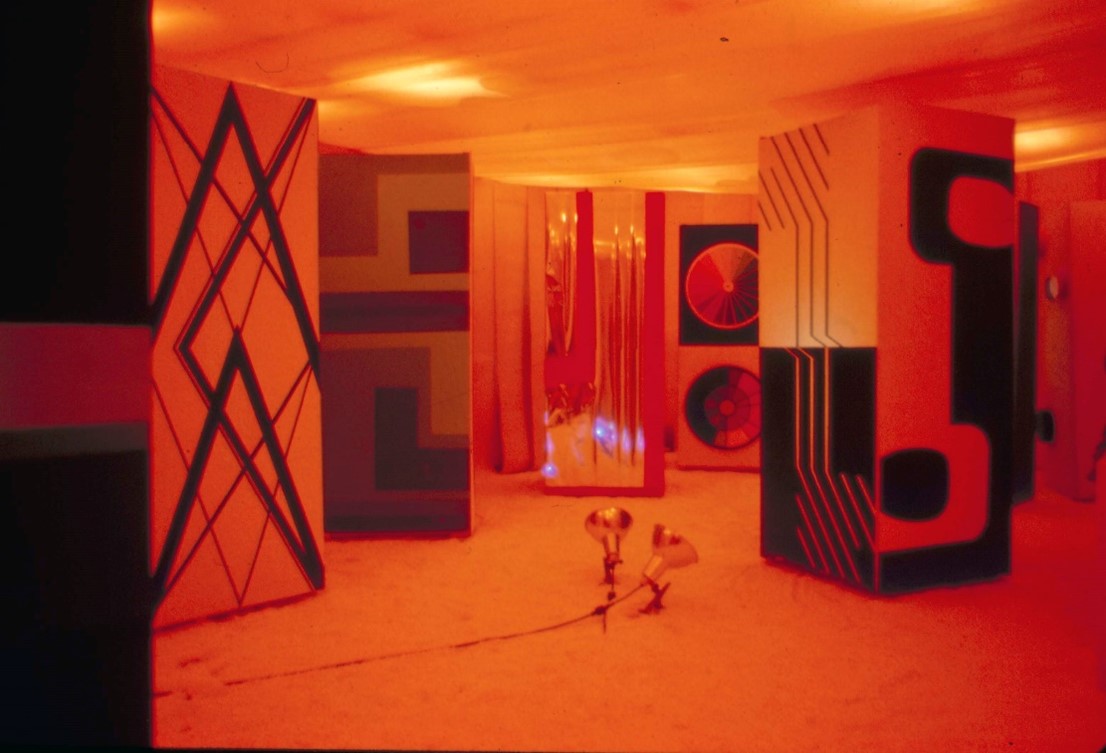
In 1973, Ràfols coordinated another collective experience under the name Super collage, which consisted of producing a collage that was large enough for someone to enter. The work was divided into two parts. On the one hand, it involved collecting materials, primarily from advertising. On the other hand, students carried out the practical realization of the collage under the supervision of Albert Ràfols. The objective of the activity was to establish a dialogue between the architectural space, the interior volume of the classroom, and the chromatic and formal elements that were incorporated into the walls, ceiling, and floor with the aim of understanding how these elements modify the concept of space in their relationships to one another.
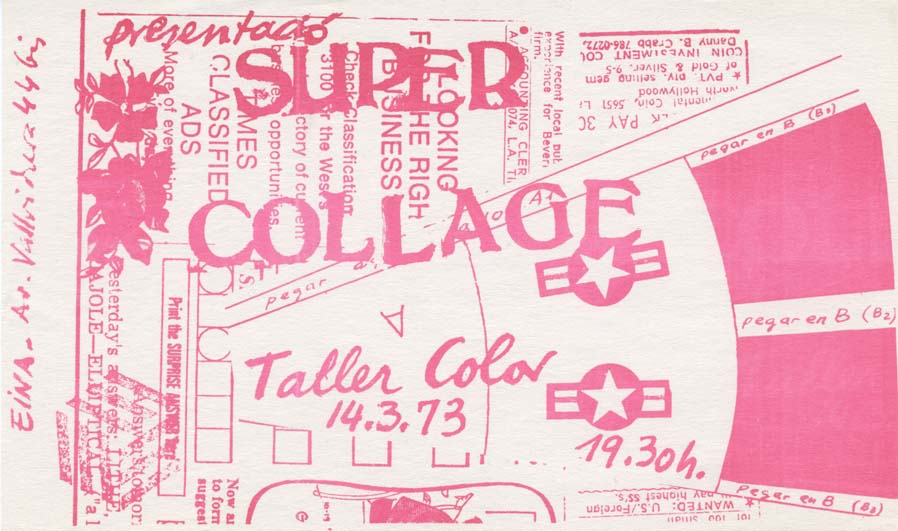
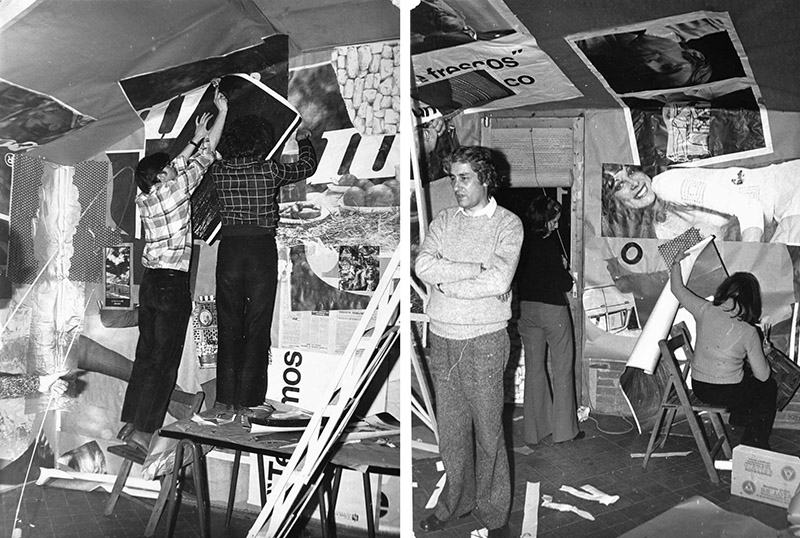
The lecture Dada, art, provocation by Albert Ràfols on the different artistic groups and capital cities of the Dada movement also stands out as a unique action. Ràfols spoke through a magnetophonic pre-recording while drawing a graphic diagram of the contents that were being narrated live. His intervention became a Dadaist work, producing the resulting mural. This mural currently forms part of the EINA Foundation's Art Collection.
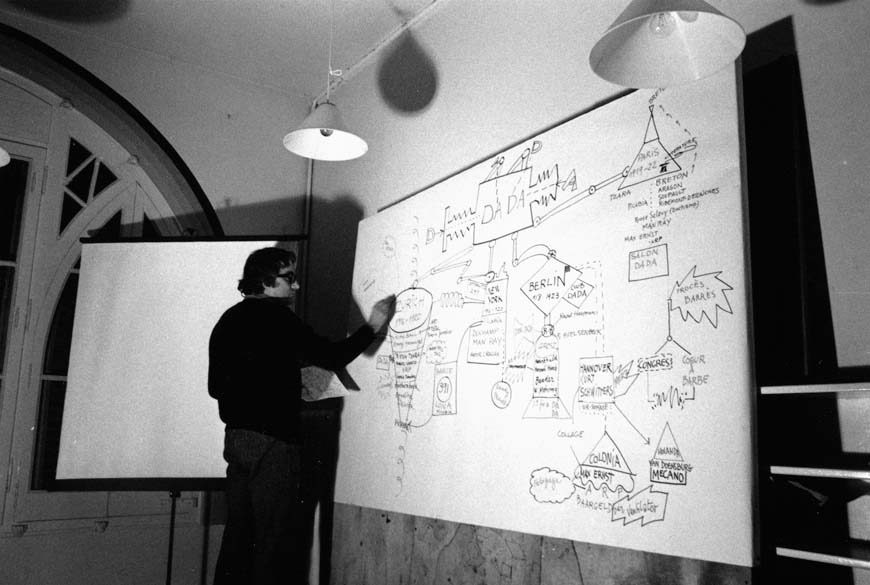
With the introduction of art studies in the seventies, Albert Ràfols diversified his range of teaching, combining the Colour Workshop with other subjects such as the Plastic Techniques Workshop and Painting and Composition. From the mid-eighties and up to the nineties, he focused on the intensive workshops module of art studies, teaching painting, colour, form, and composition workshops.
Flyers and other materials related to activities
As the director of EINA, Albert Ràfols was also actively involved in designing many of the flyers that spread awareness about events, seminars, courses, and workshops that EINA held from the late sixties to the eighties. Designed by Xavier Olivé, these materials featured handwritten texts by Albert Ràfols. Ràfols also drew different promotional posters for art studios.
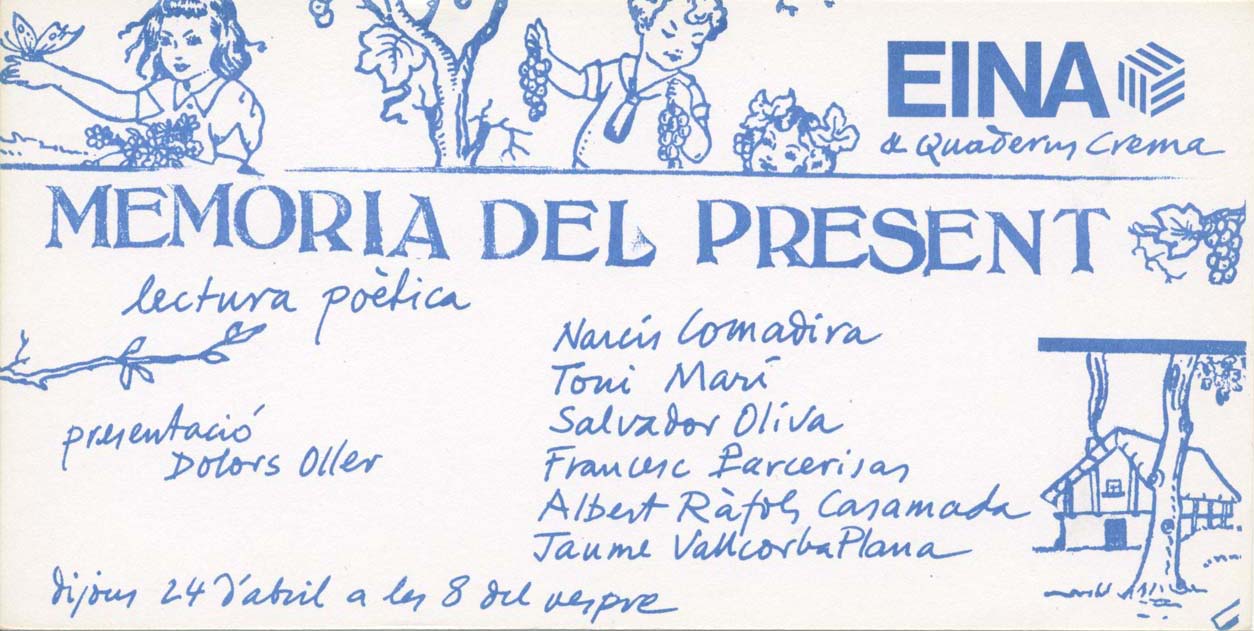
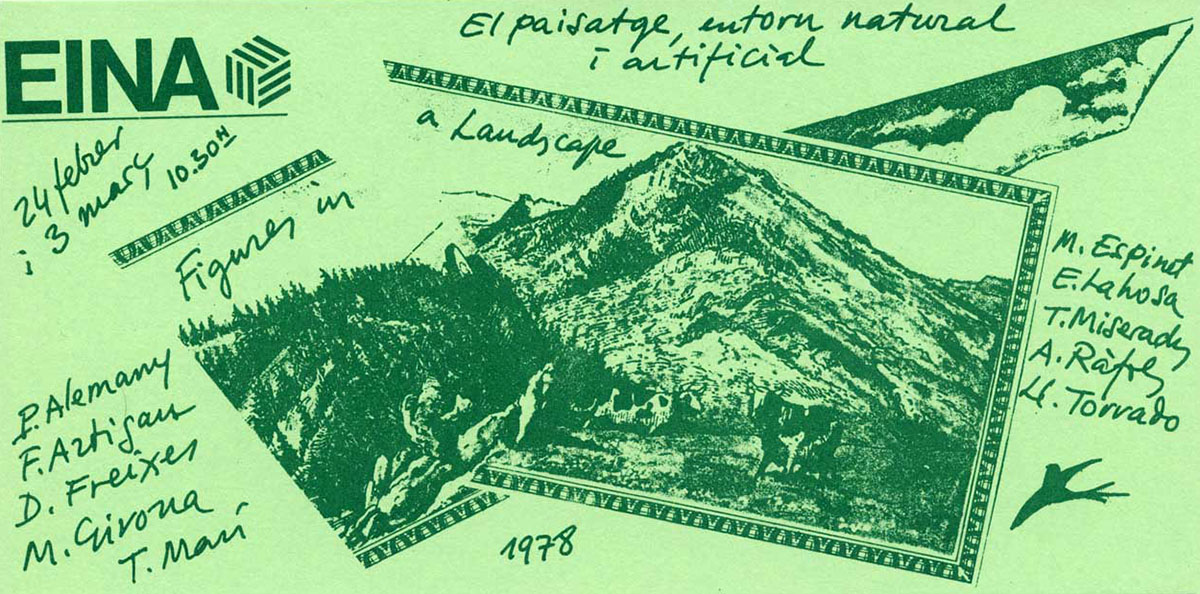
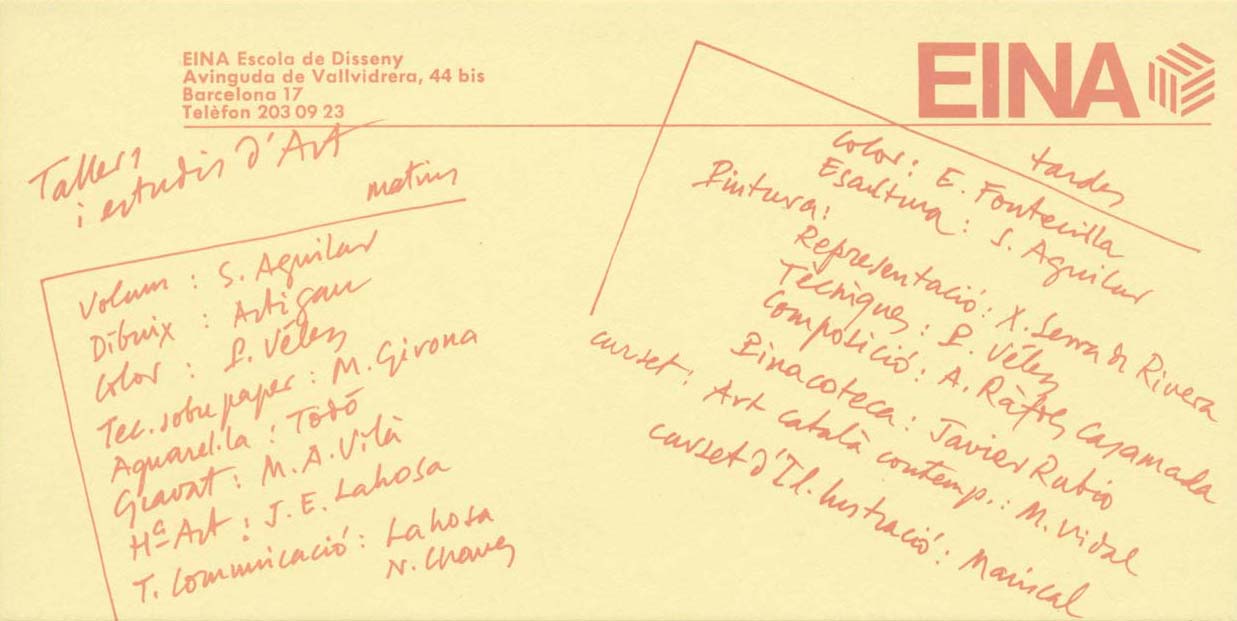
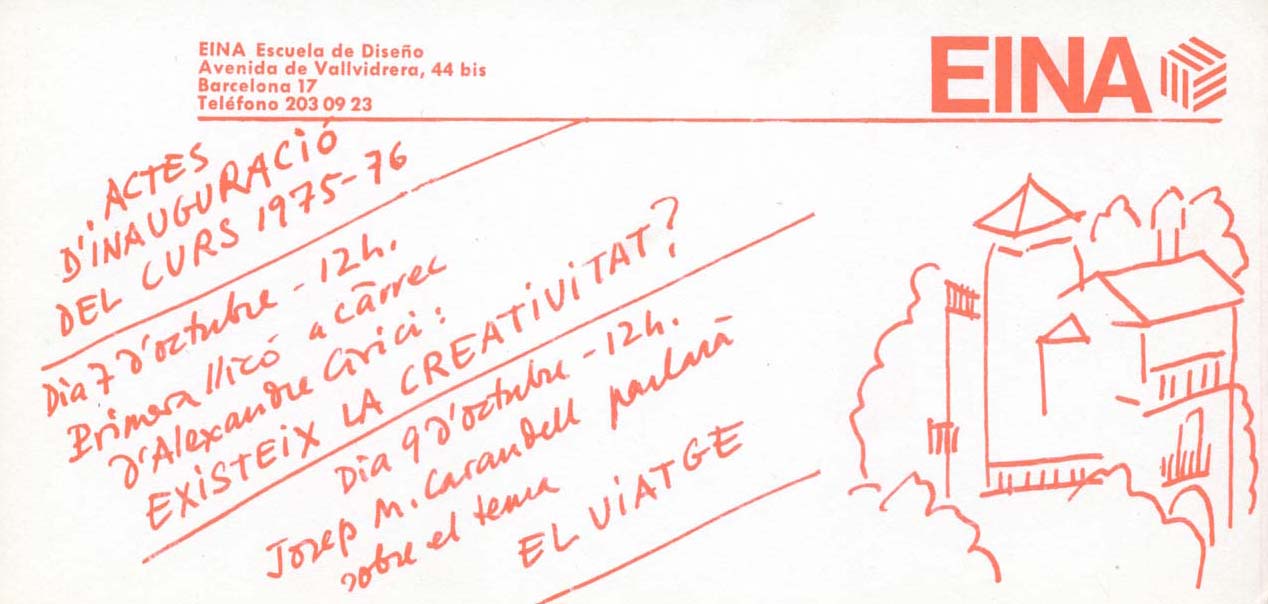
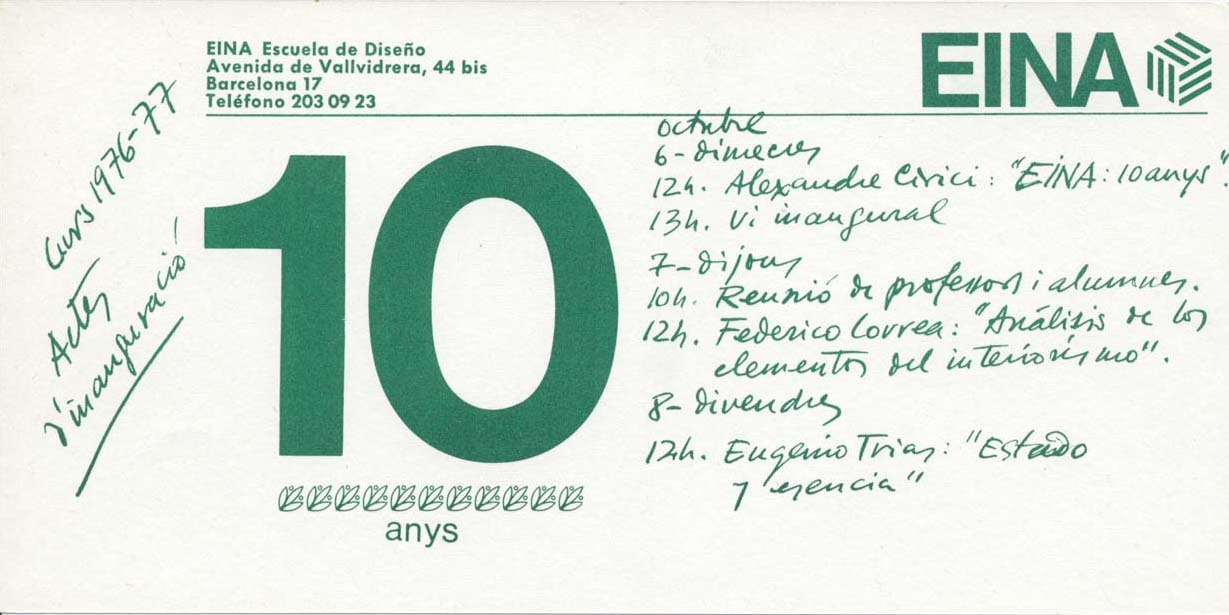
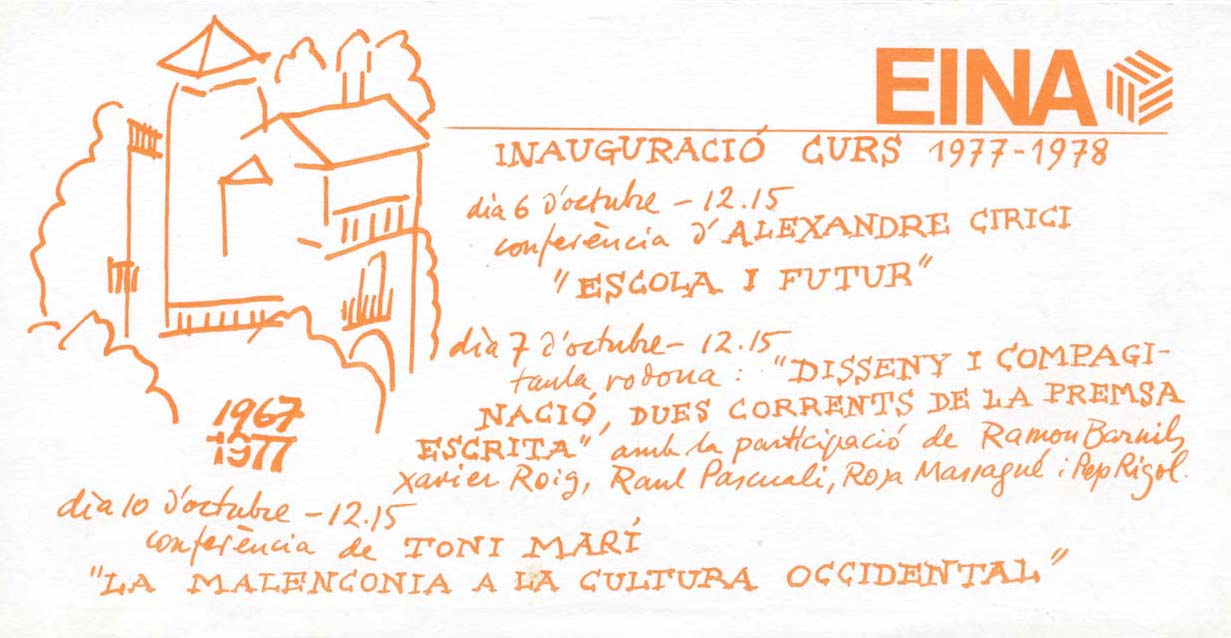
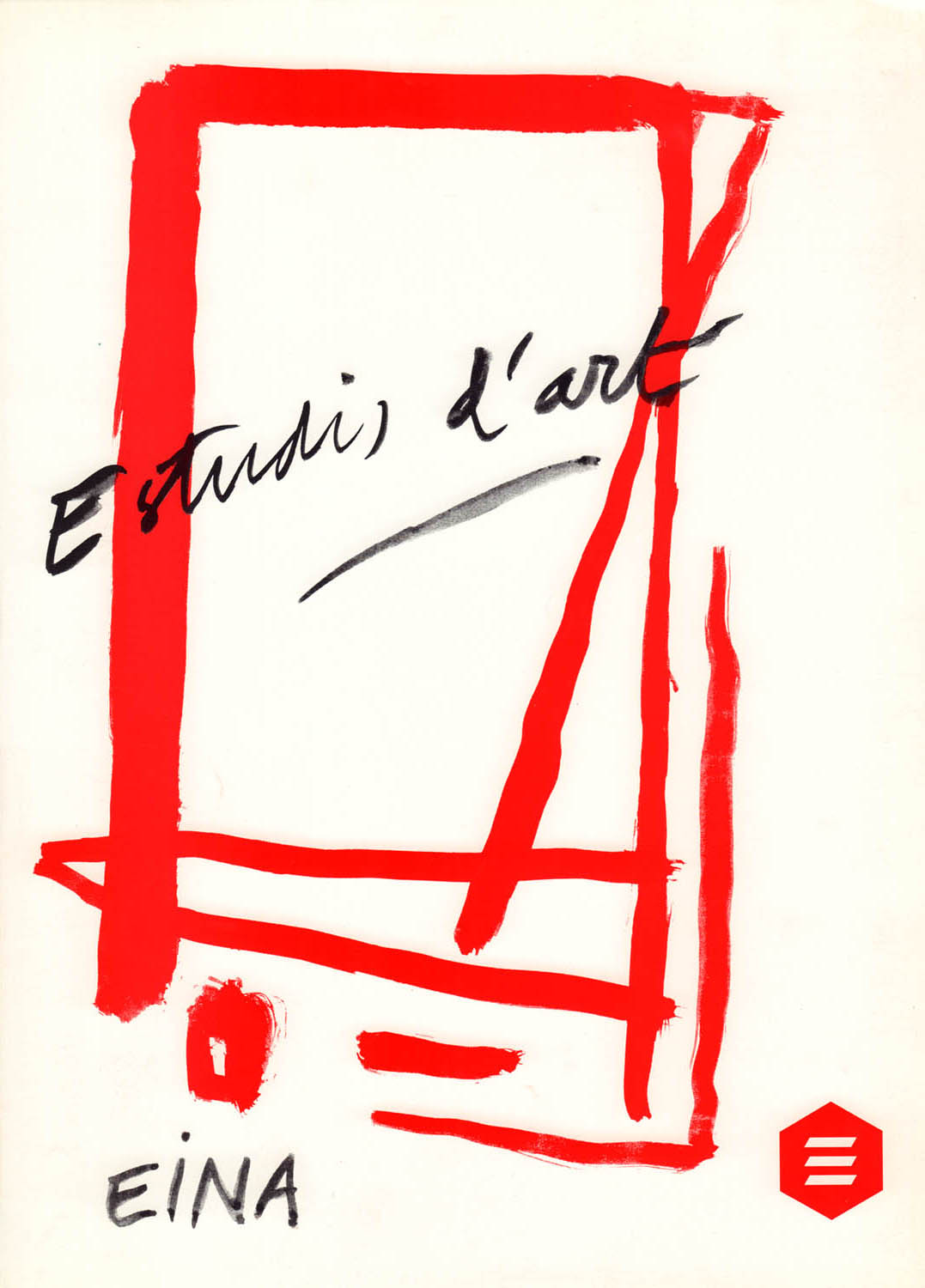
EINA Exhibitions
Within the framework of the activities held at EINA, Albert Ràfols also curated several exhibitions. Among the most representative are the ADLAN exhibition and testimony of the era from 1932 to 1936, a commission for EINA from the Association of Architects of Catalonia, held between the months of February and March 1970 at their headquarters in Plaça Nova in Barcelona, focused on reflecting the attitude of the group to publicize the latest trends in contemporary art, as well as their social involvement.
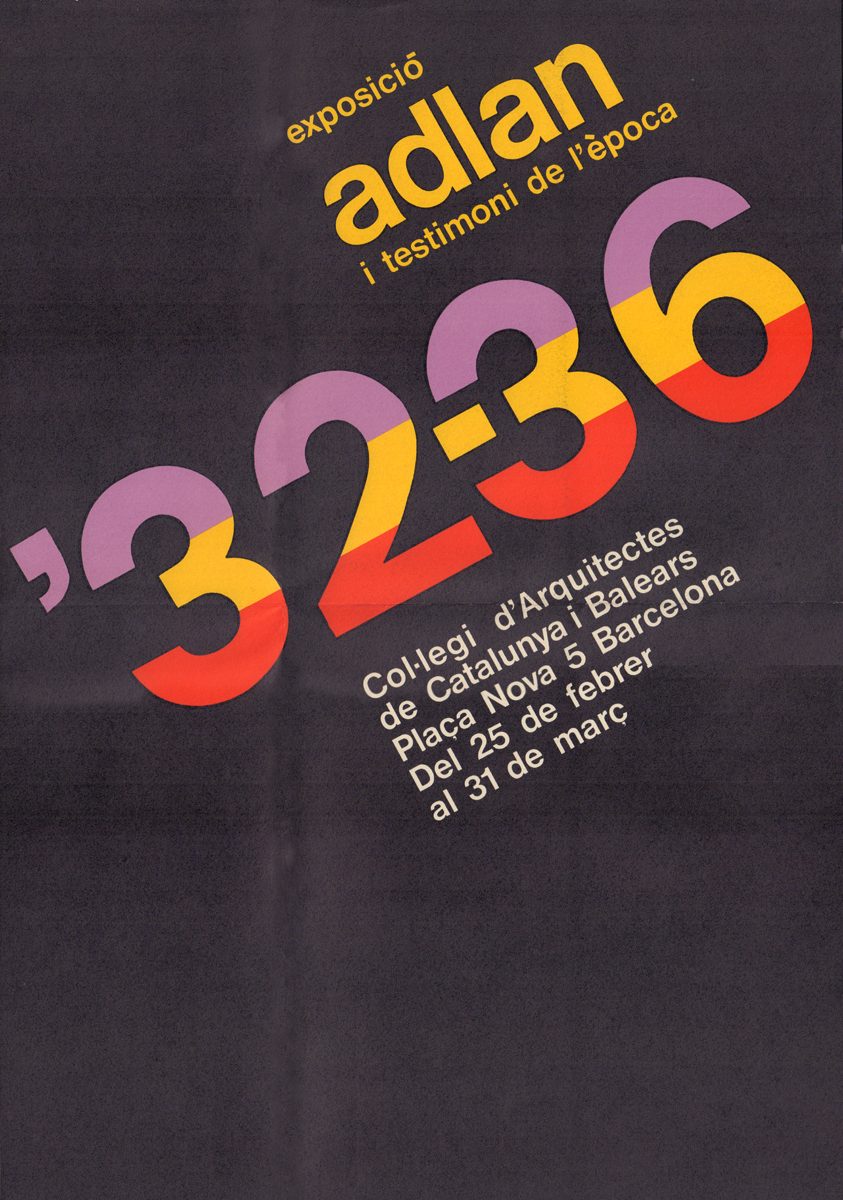
Design by Paco Llobet.
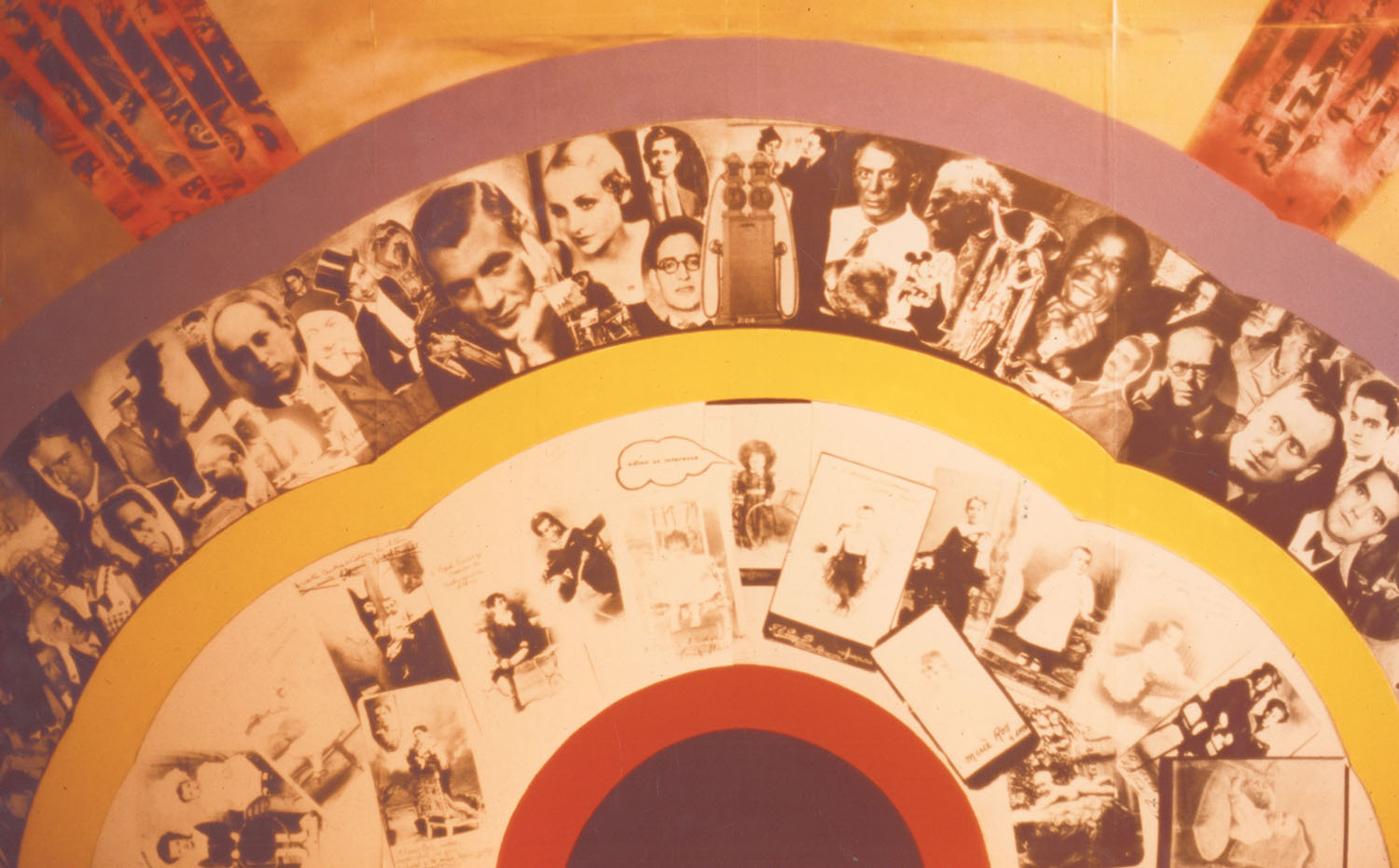
Other noteworthy works include the 1st International Art Exhibition: Tribute to Joan Miró held in Granollers in 1971; The First International Postal Delivery Exhibition (1973) and Around the trunk (1974) along with Xavier Olivé; the exhibition Sebastià Gasch: 50 years of avant-garde in 1976; the tenth anniversary celebration of EINA (1977); and the thirteenth anniversary of EINA at Gallery 13 and the exhibition June in the garden, both in 1980, also featuring collaboration by Xavier Olivé. All these commissions received by EINA and coordinated by Albert Ràfols Casamada were integrated into his teaching work, involving students in the conceptualization and design of exhibition proposals, montages, posters, catalogues, and more.
In 1981, Ràfols participated in the seminar Taste and style: exchanging sensations, with a thematic dinner at the restaurant Jean Louis Neichel, along with designing the corresponding menu. Later, in 1995, he did the very same during the second edition of the seminar called Taste and style: artists' kitchen, held within the framework of the Second Catalan Culinary Conference.
In 1987, he wrote the text Notes for history of EINA, integrated within the catalogue for the exhibition EINA, twenty years at the avant-garde, 1967-1987.
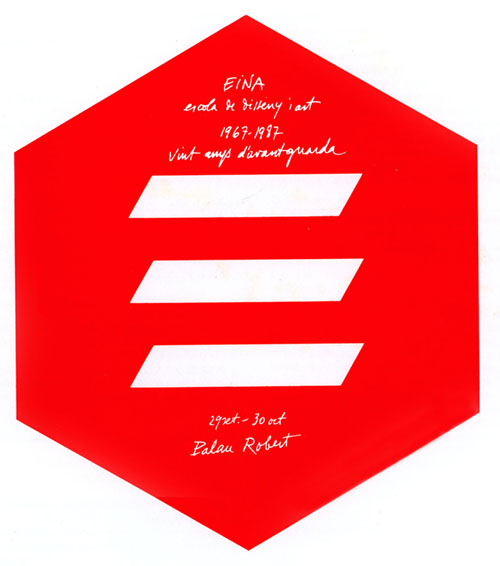
Artistic career
Albert Ràfols Casamada's artistic career is widely represented in the EINA Foundation art collection, home to a total of seventeen works in various formats and techniques such as silk-screen printing, engraving, lithography, drawing, acrylic, pastel, and tempera, ranging from 1973 to 2004.
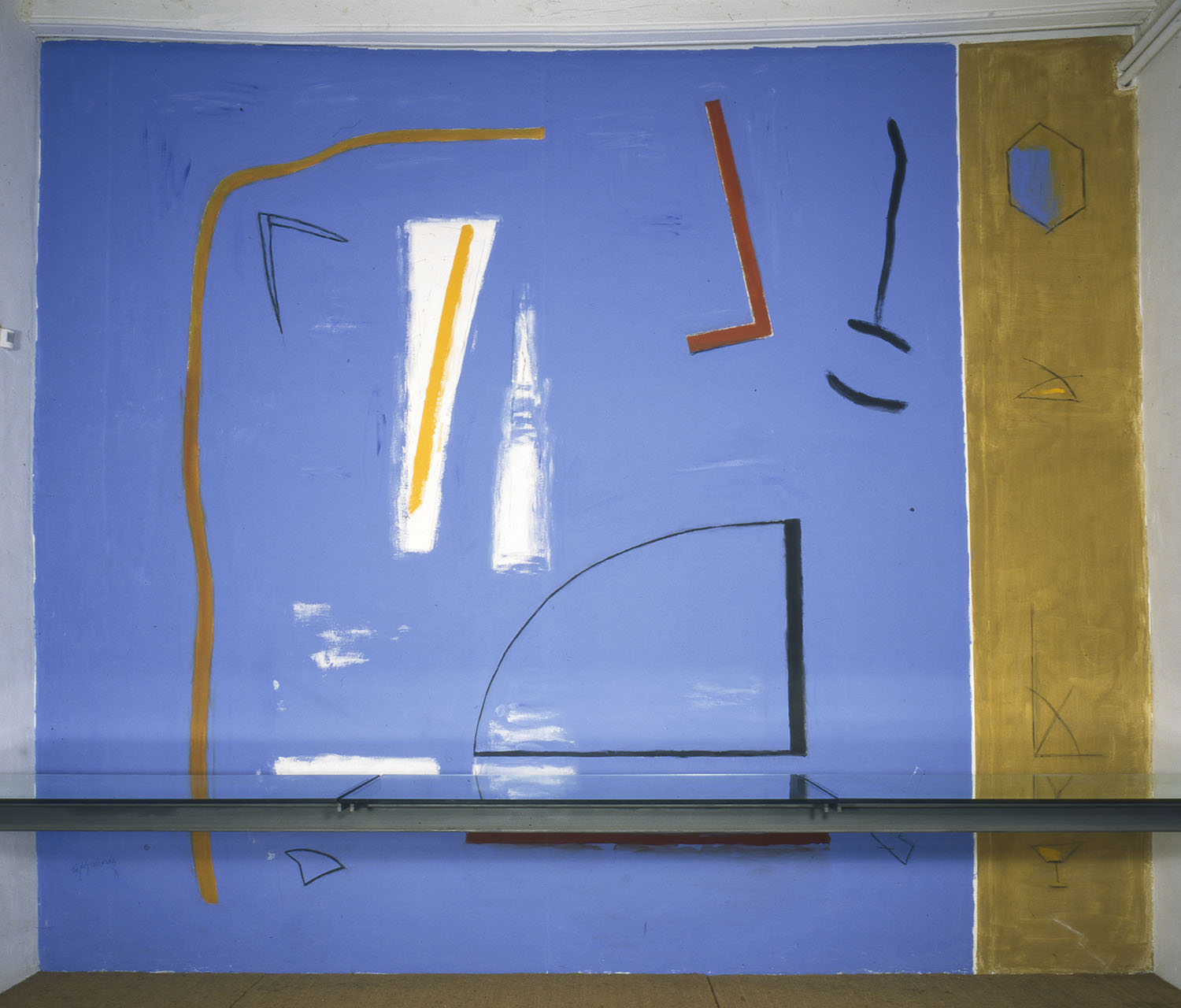
EINA Mural by Albert Ràfols Casamada.
The silkscreen that he donated as part of the tenth anniversary to the school's staff members can also be found among these works. This work inaugurated the tradition of publishing a graphic work conceived by an EINA professor every year, first in June and starting in 1980 coinciding with the Christmas dinner. This tradition continues to this day.
The complete list of works held by the EINA Art Collection is as follows:
- Mural Dadà (1973). Drawing on paper.
- La Casa Manuel Dolcet (1977). Screen printing.
- Sense títol (1979). Acrylic on canvas.
- Objectes (1979). Acrylic on canvas.
- Vertical (1980). Acrylic on canvas.
- Menú (1981). Drawing on paper.
- Sense títol (1982). Engraving.
- Sense títol (1986). Screen printing.
- Jardí ombrívol (1988). Acrylic on canvas.
- Arran de moll (1989). Acrylic on canvas.
- Sense títol (1993). Pastel.
- La danse (1993). Acrylic on canvas.
- Veure és sentir (1993). Lithograph.
- Mural Escola EINA (1994). Tempera on canvas.
- Gust i estil (1995). Printed on paper.
- Sense títol (1997). Lithograph.
- Angle ocre (2002). Acrylic on canvas.
Poetic work
As a poet, Ràfols did not publish his work until he was in his fifties. Nonetheless, he took on diverse genres such as essays and poetry and even included the latter within his artistic work.
In 1973, Ràfols participated in the visual poetry exhibition organized by EINA within the framework of the Contemporary Art Seminar directed by Maria Lluïsa Borras, with the work A nude (1972).
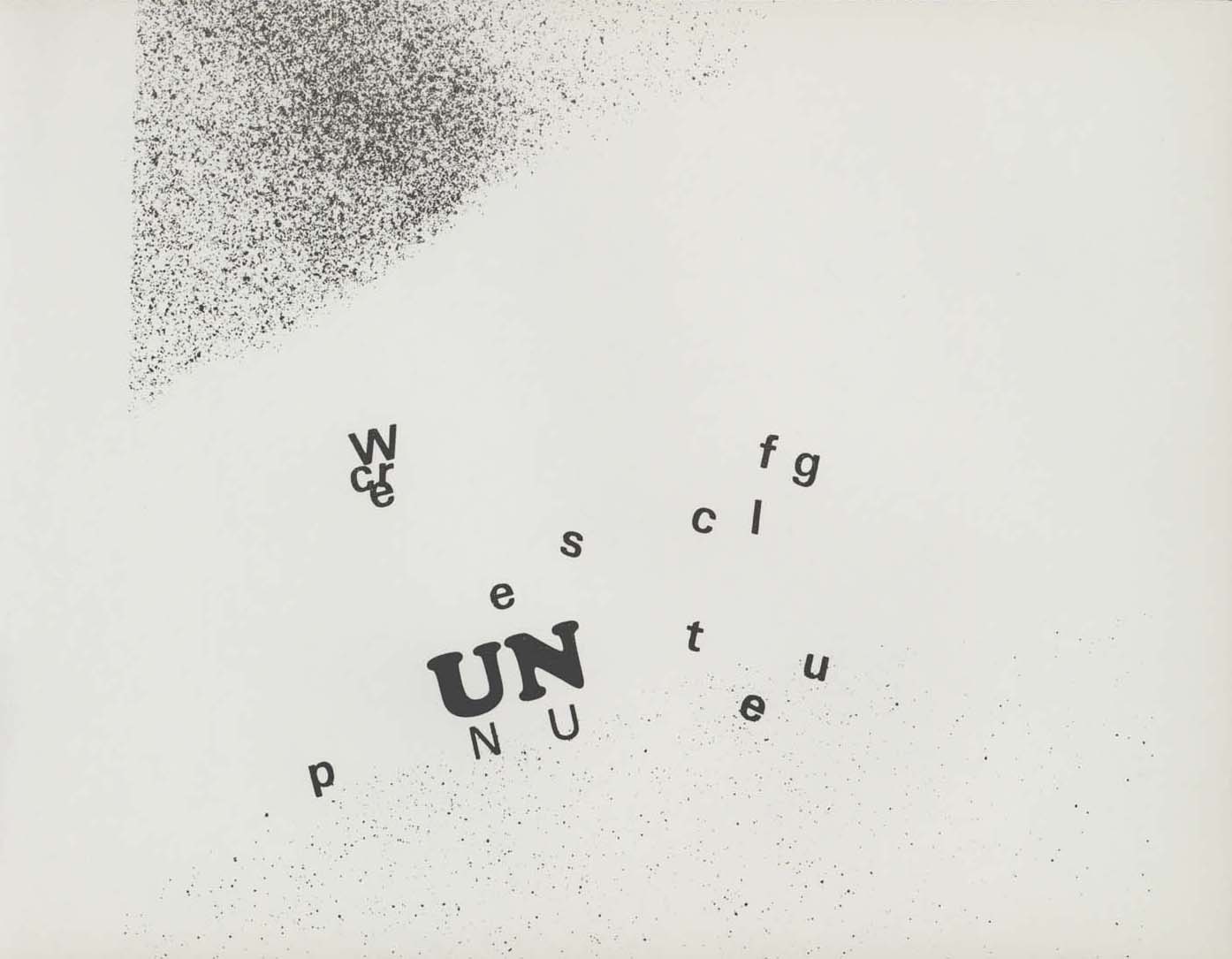
Ràfols’s complete poetic work can be found in the work Sign of Air: poetic works, 1939-1999 (Proa, 2000). A few years later, the publisher Rosa Cúbica, along with collaboration from the EINA Foundation, published an anthology entitled The colour of stones: poetic anthology 1976-2002. Finally, in 2004, the EINA Foundation and the publisher Rosa Cúbica once again jointly published one of Ràfols's works, entitled Song: poems for Maria, a limited edition on the occasion of Maria Girona's 80th birthday. The publication included an anthology consisting of twenty-five poems by Albert Ràfols selected by Sam Abrams that covered the entire works by the artist and poet from 1946 up to an unpublished text from 2003, along with four screen printings by Maria Girona.
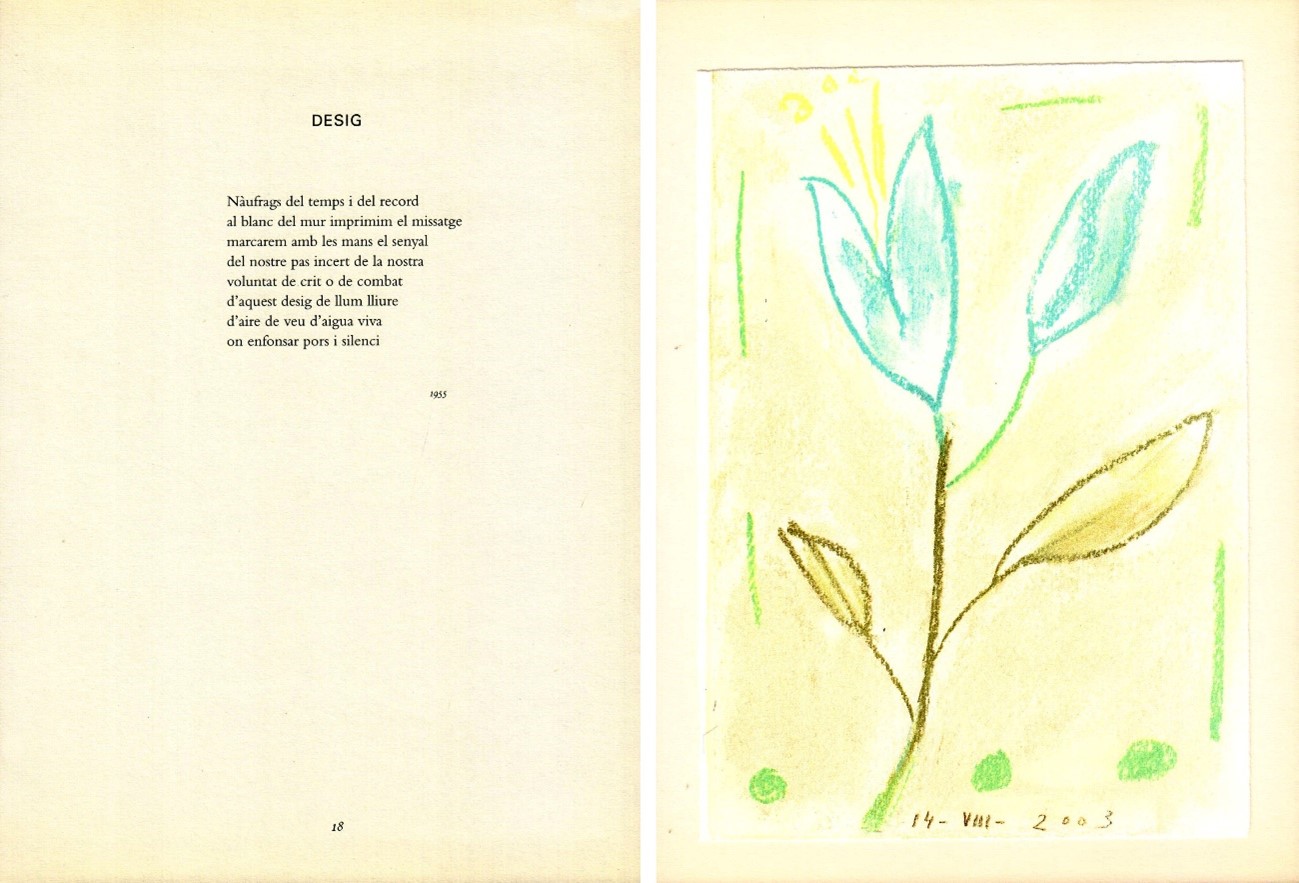
Detail of the book Cançó: poemes per a Maria.
The poetic work of Albert Ràfols has been interpreted by musicians on two separate occasions. The first, in 1972, by Maria del Mar Bonet, and the second, as part of the Christmas dinner of 1997 by the pianist Albert Guinovart and the performance artist Carme Canela, who composed poems set to music on the occasion of EINA's 30th anniversary.
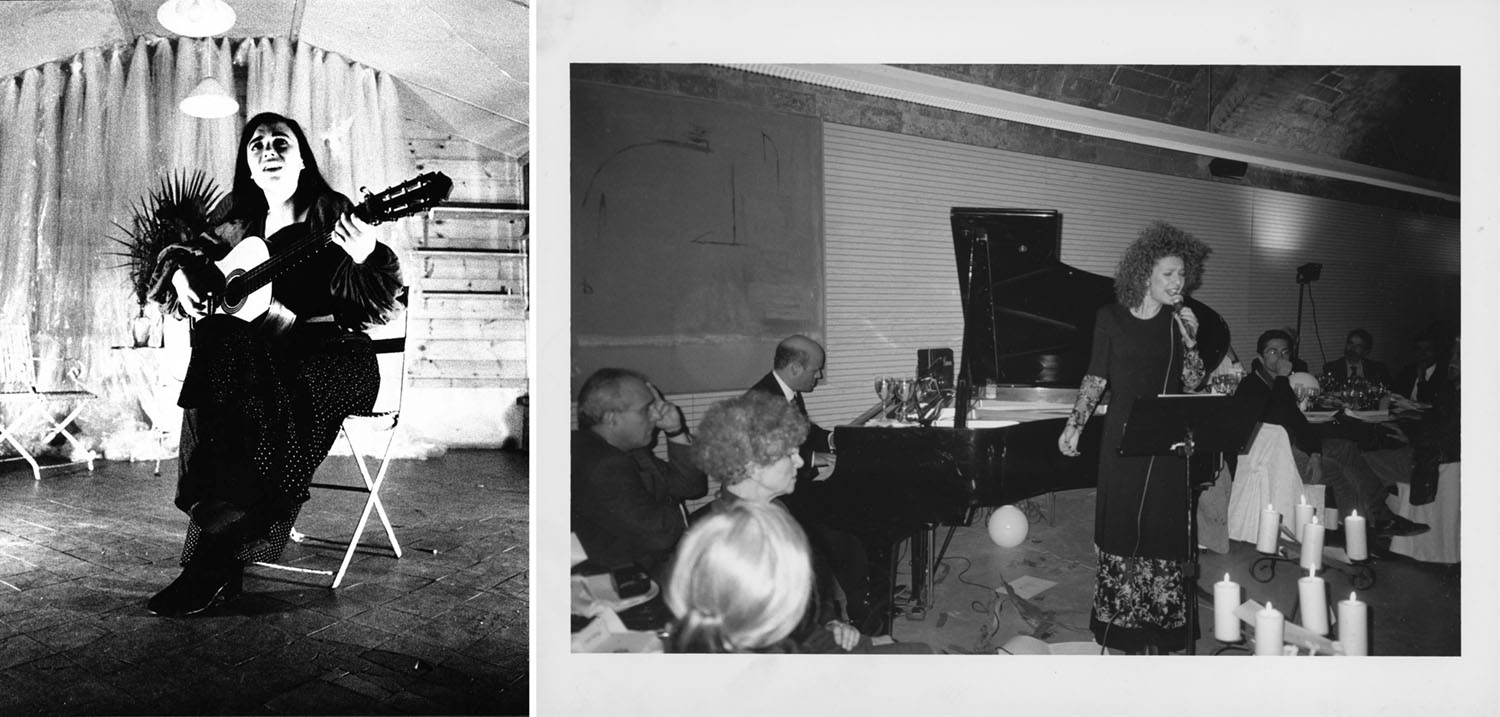
Photographs by Albert Font and Manel Esclusa.
Tributes
EINA has recognized the career and contributions of Albert Ràfols several times both at the school and in the world of art and design education. The first of these recognitions was a joint tribute dinner with Maria Girona in 1973.

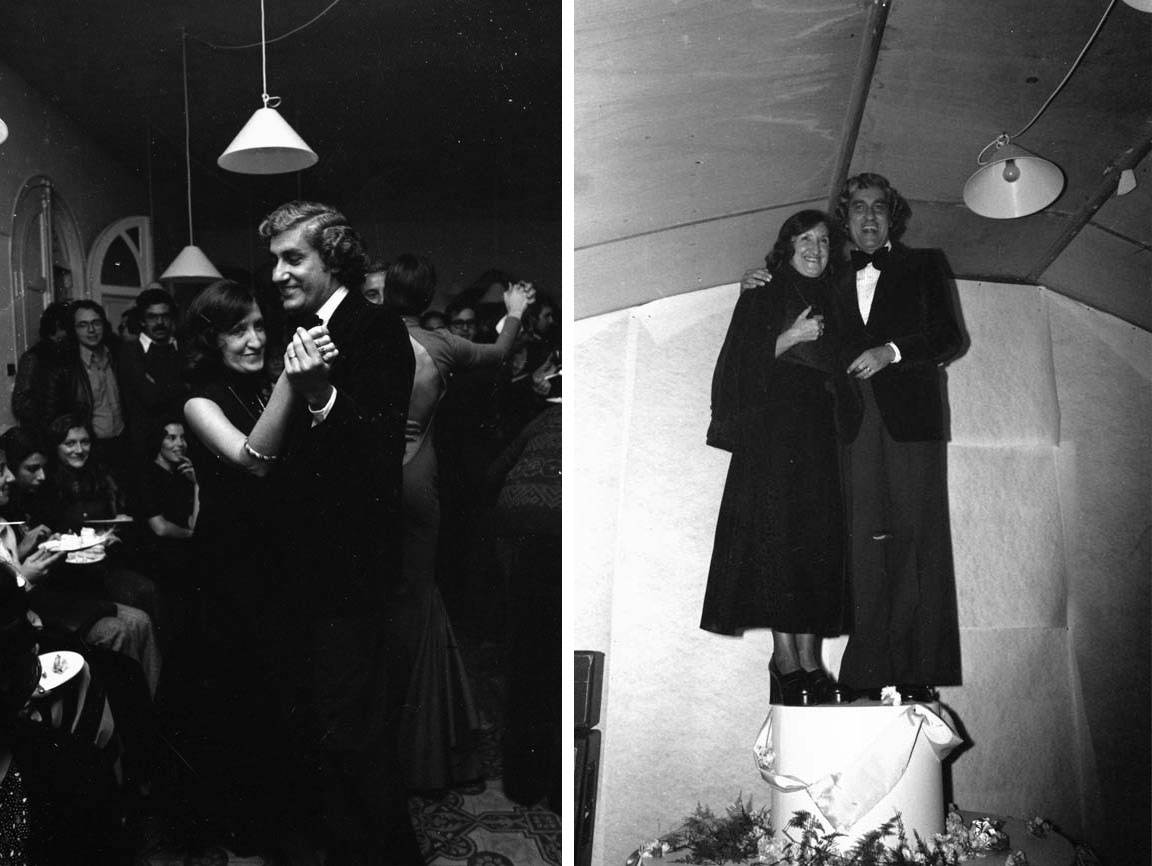
In 1993, on the occasion of the 70th anniversary of his birthday, the EINA Foundation organized a new tribute that went beyond the notion of a celebration and turned into an event starring the painter and founder of EINA himself.
The event kicked off with a presentation of the book Seeing is feeling, jointly published by EINA and Quaderns Crema and edited by Sam Abrams, Josep M. Castellet, Victoria Combalia, Antoni Marí, and Eudald Tomasa. With the presentation of the book as the background, Albert Ràfols published a self-titled engraving in collaboration with the studio la Polígrafa.
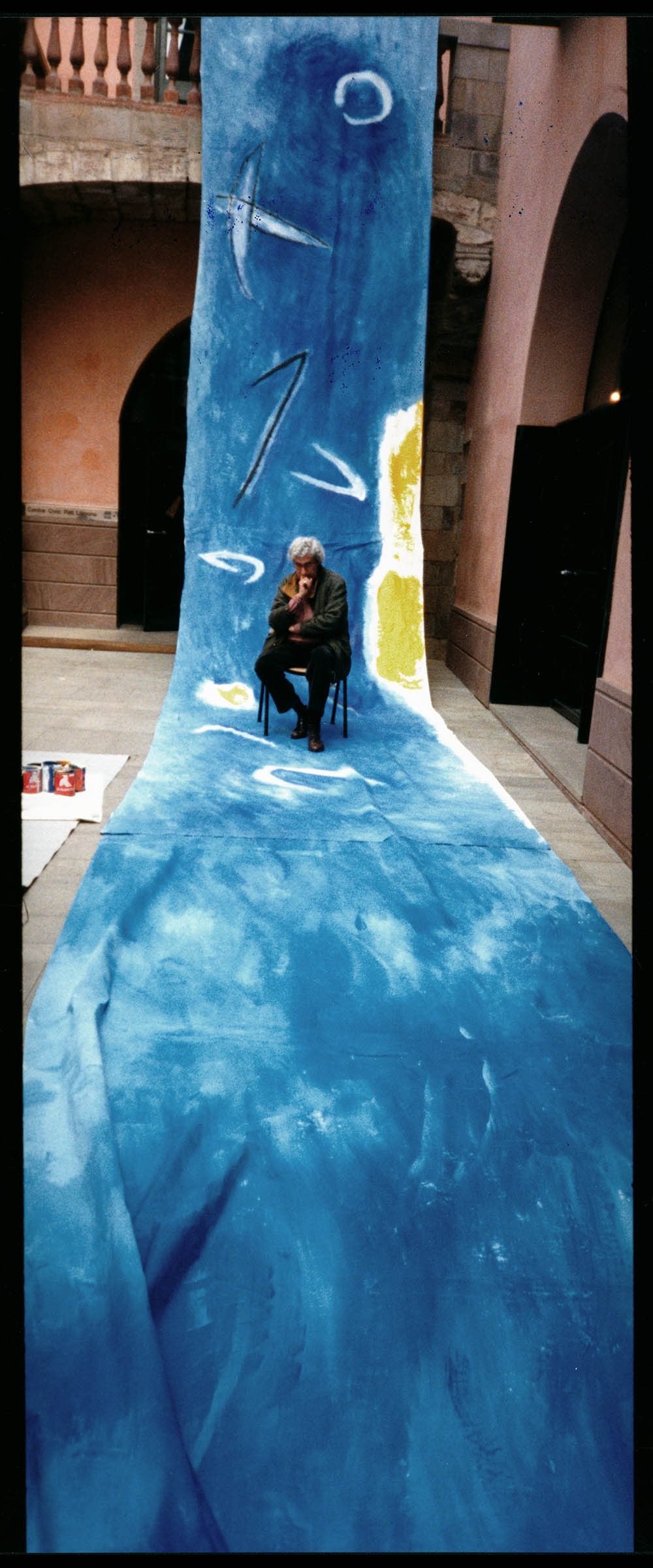
Photograph by Manel Esclusa.
Other cultural institutions such as museums and associations also paid tribute to Ràfols over the following years. The first institutions to do so were the IVAM and MACBA in 2001, which organized a retrospective entitled Albert Ràfols-Casamada, 1953-2001. The exhibition presented a chronological collection of his diverse work: drawings, collages, sculptures, visual poems, literary works, and a graphic documentation of his participation in Barcelona’s cultural life.
In 2007, the FAD also recognized his role in developing the field of design in Catalonia.
Finally, the MNAC also honoured him in 2009 during an event featuring Antoni Marí, Josep Maria Castellet, and Victoria Combalia. The Minister of Culture and Media, Joan Manuel Tresserras, defined him at the event as a “total artist” with the ability to explore “the limits of language” with a “revolutionary calling.”
Publications by EINA
Over the years, EINA has dedicated several publications to Albert Ràfols that compile his works and are present in the institution's Art Collection, including his poetic work. They include:
- Ràfols Casamada, Albert. Àlbum Ràfols-Casamada: veure és sentir. Barcelona: Fundació EINA, 1994.
- Maria Girona i Albert Ràfols-Casamada al fons d'art de la Fundació EINA. Barcelona: Fundació EINA, 2002.
- Ràfols-Casamada; Albert. El color de las piedras, antología poètica, 1976-2002. Barcelona: Fundació EINA; Ediciones de la Rosa Cúbica, 2003.
- Ràfols-Casamada; Albert; Girona, Maria. Cançó: poemes per a Maria. Barcelona: Fundació EINA; Ediciones de la Rosa Cúbica, 2004.
